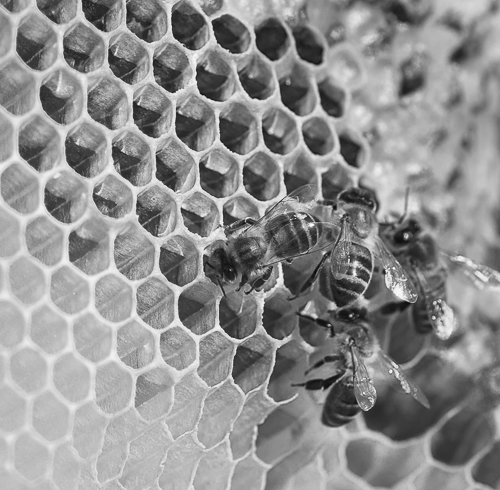During our stay in Laguardia, we stayed at Erletxe country house, and since the owner Maria Arrate, has had beekeeping as a hobby for more than 30 years, it was only natural to ask her if we could see her beehives. Luckily, her nephew Unai do regular visits to the beehives and he was willing to let us go with him.
Upon our arrival we put on protective clothing with hood and net, but the bees seemed very calm and it wasn’t strictly necessary. The beehives were placed on a hillside and just by standing near them, we could observe bees with two small yellow shapes on each side of their bodies enter the beehives. The yellow shapes were pollen, which the bees use to feed their larvae.
Like all the beehives I have seen so far, these beehives also had a lower and an upper part. The entrance of the beehive is in the lower part , while the upper part consists of wooden frames with honeycomb impressions where the bees build wax honeycombs. In fact, the honeycomb impressions work as foundations for the bees such that they build honeycombs with little effort. Pulling out the frames one by one, we could see healthy hives with lots of bees busily working on the honeycomb, some of them even feeding larvae. Actually, the queen lays fertilised eggs in empty cells, but it is the worker bees who feed them. Besides, there was also a lot of honey on the honeycomb, ready to be harvested.
We were also shown some beehives with poor health and Unai told us that they would probably let a new queen enter the beehive next spring. Then, the queens would fight and hopefully the new, healthy queen would survive.
Unai also told us that the beehives have to face south in order to receive as much sunlight and heat in winter. The bees also need to be fed in winter with sugar or corn syrup.
Last but not least, the bees have produced honey for serving the guests at the Erletxe country house for many years.

